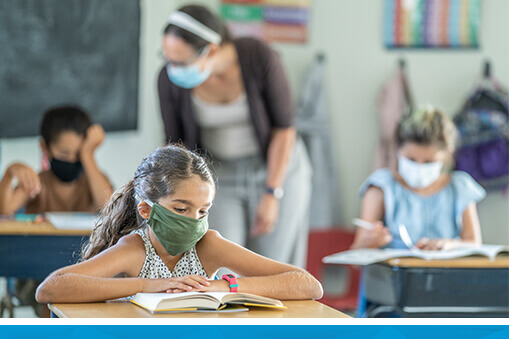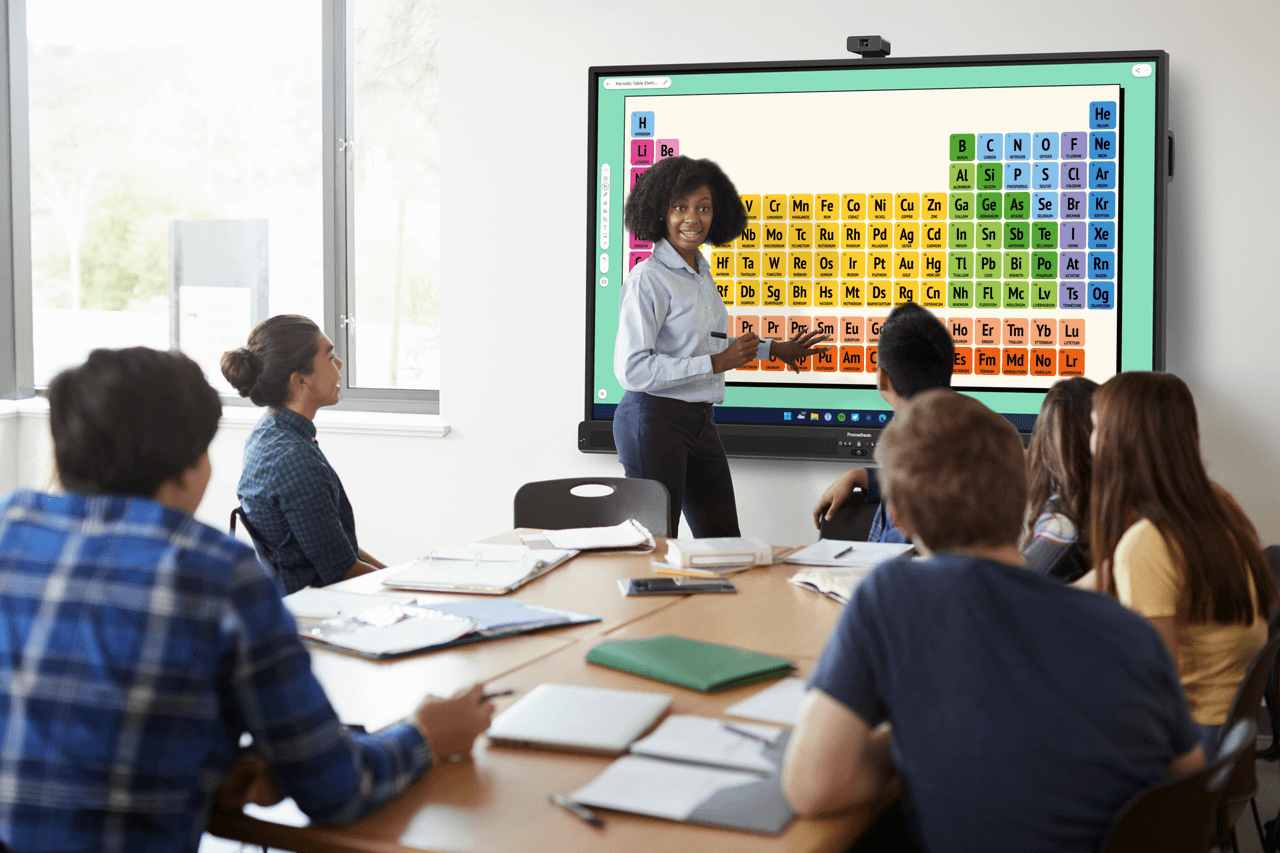Published on October 18th, 2021
Understanding learning loss
10 minute read

The first blog in a new series exploring learning loss
Learning loss among students has become an increasingly important topic of conversation in today’s world. In this blog, we’ll dive into what learning loss is, why talking about it in the “right” way is important, and what can be done to help students who have experienced it.
What is Learning Loss?
Historically, the term ‘learning loss’ has been used to describe the educational setbacks students may experience during prolonged time away from the classroom. Discussions around learning loss often surfaced in conversations about the consequences of summer vacation, for example.
However, since March 2020, the definition of learning loss has evolved to describe the effects of the COVID-19 pandemic on students and how their learning has been affected by what they missed while classrooms were shut down and remote learning was in effect.
Recent analysis from McKinsey and Company estimates that on average K-12 students lost four months of mathematics and four months of reading by the end of the 2020-21 school year. And sadly, the pandemic highlighted the significant gaps between opportunities and access for lower-income communities of color, hitting those students the hardest. No matter how you slice and dice the data, one thing is for certain: students did not learn at the same rate that they would have in a non-pandemic year.
Further complicating matters, as a result of remote learning, many students were unable to participate in standardized tests in their states, so their learning data may not be current, making it difficult for schools to determine a course of action to address learning loss.
While there is still some debate around the extent to which students experienced learning loss and how that will impact them in the future, more data continues to surface. New research from a 50 state study conducted by Northwestern, Northeastern, Rutgers, and Harvard universities, suggests that educators and parents are both significantly worried about the effects of loss of learning. 67% of those who responded also expressed concern about whether their child in grades K-12, had the same quality of learning as they did prior to the pandemic, most coming to the conclusion that remote learning can never fully replace in person learning due to its perceived limitations.
Why Is the Term Potentially Problematic?
There is a clear division amongst educators and experts as to whether or not using the label “learning loss” adds insult to injury. As an alternative, McKinsey and Company coined the term “unfinished learning.” Some outspoken members of the education community featured in articles for Edutopia and the Washington Post have gone so far as to challenge the concept of learning loss as a whole, speaking to concerns about labeling this cohort of kids as damaged. Educators with these beliefs emphasize the importance of focusing on what students learned during the pandemic, rather than the setbacks they encountered, noting that the pandemic required students to learn arguably more valuable life skills, e.g., how to reset prior learned routines and behaviors in a “typical” day, how to adapt to constantly evolving scenarios that arise, and most powerfully how to embrace learning remotely with the help of technology.
In addition to honing important skills such as flexibility, resilience, problem solving, and creativity, students also were presented with new opportunities to master new technology. Due in part to powerful edtech like Promethean’s ActivPanel, students learned to maximize their remote learning potential via mastery of online classrooms, Zoom sessions, virtual collaboration, and chat boxes. They also learned how to access homework and lessons remotely and flourish independently through student-led and personalized learning. Some students even discovered that they thrived while learning online for a variety of reasons including feeling more comfortable at home versus in-person teaching in the classroom.
Because students gained valuable skills such as how to learn independently, how to advocate for themselves, how to manage themselves – their time and their commitments, and learned how to do so in an obscure manner, they need to continue to do so as they settle into the new academic school year.
No matter what your interpretation and labeling of the terminology, it’s clear that schools must now be tasked with learning recovery. The plan for how to achieve this should be dependent upon the type of learning that is at stake, whether it be social-emotional or important milestone markers like reading and math skills.
How Can Learning Loss Be Mitigated?
One way to address learning loss among students is to future-proof the learning environment. This can be done with the help of education technology that continuously innovates, ensuring that educators always have the latest and greatest tools at their fingertips.
Educators can also honor and recognize the skills that students learned during the past year and a half by offering creative, meaningful and challenging schoolwork that allows students to continue to grow as self-directed learners. Think about the tactics that you may have employed in the past and propel time forward with modern technology. When students are challenged, even above their current levels, they will be supported from both social and emotional health perspectives. Aim to learn from data and evaluate the needs of each student to create a blended learning environment that combines a student’s non-technical and technical skills, offering cooperative learning, collaborative spaces, and peer-to-peer engagement.
Are you concerned about how your school district will be able to pay for or roll out this EdTech? Did you know that there are billions of dollars of federal relief funding available to K-12 schools? Here are some things that you need to know about the available federal funding and how it can be used.
First, understand the funding that is available to pay for edtech through the CARES/ESSER I, CRRSAA/ESSER II, and ARP ESSER Acts. Many school districts have already used this federal funding to purchase new edtech and replace any outdated, inefficient, traditional systems. Review Promethean’s Guide to Federal Stimulus Funding for Education for more information.
Then get answers to your questions about stimulus funding. While the application process will vary from state to state, districts of all sizes and schools of any kind are eligible for these federal funds. We recommend contacting the financial experts where you live, either in your state, by your district, or within your school to help kick the process off.
Now that you know what’s available and understand the funding allocation process, learn about Promethean’s eligible edtech solutions. Are you teaching all of your students in person? Or do you use remote or hybrid environments? Think about how you can best connect with your students, regardless of where they are. Our ActivPanel Elements Series is one of the most powerful tools a teacher can have to engage students, address learning loss, and promote learning in any educational environment. Through Promethean, you’ll also have access to resources like a library of flipcharts, videos, and apps to help you create engaging and dynamic lessons and a team of consultants in your corner from day one.
Addressing learning loss begins with selecting classroom technology and tools to create a strong foundation that will equitably support student improvement. Review the Promethean Guide to Addressing Learning Loss to learn more. And, stay tuned for our next blog in the series which will focus on key strategies for addressing learning loss among K-12 students.




